Early Beginnings
Saint George’s Parish has a long and rich history beginning with the labors of English missionary priests and garrison chaplains in the late seventeenth century. British missionaries visited Schenectady as early as 1695 and an Anglican Parish under the patronage of St. George was established in 1735. By 1758, the Vestry’s attention was firmly fixed on raising funds for the construction of a church. The young Parish found a warm and valuable friend in Sir William Johnson, His Majesty’s Superintendent for Indian Affairs in North America. Johnson’s name and generous pledge headed the first Parish subscription list. Well known throughout the colonies for his defeat of the French at Lake George, Johnson’s heroic capture of Fort Niagara only weeks before the initial subscription helped guarantee a favorable response. Sir William solicited contributions from friends and fellow officers which, together with a generous gift from Trinity Church (Wall Street) in New York, were augmented by donations of various amounts from the Dutch and English inhabitants of Albany and Schenectady. Indeed, settlers throughout the Mohawk Valley, regardless of their own religious affiliations, gave generously from their slender means to help build Saint George’s Church.
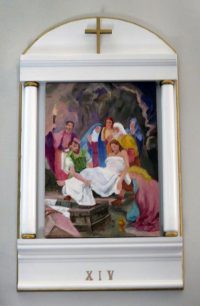
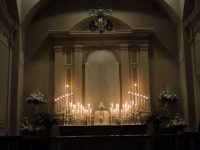
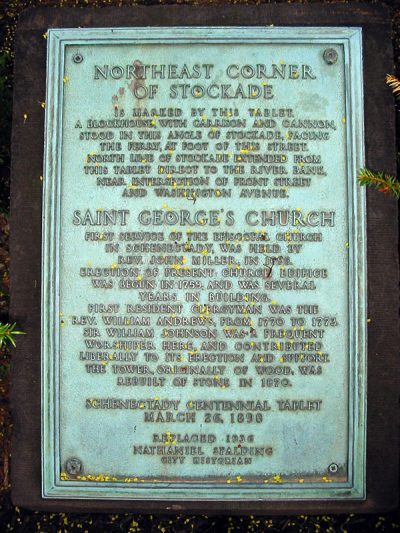
The First Rectors (See listing)
Only with substantial financial support from the London headquarters of the Society for the Propagation of Gospel Knowledge (SPGK) was the young Parish able to support and maintain a resident clergyman. In a letter to London, the Vestry described the congregation of the early 1770s as consisting of “three or four Persons in small Trade, some Mechanicks and many Inferior to them who find it extremely difficult to maintain – even with the most rigid Economy – their own Families.” Nevertheless, circumstances appeared hopeful after the arrival of the Parish’s second Rector, the Reverend John Doty, in 1773. Political events intervened, however, and after twice being imprisoned because of his royalist sympathies, the Reverend Mr. Doty fled to Canada in 1777 to accept an appointment as a military chaplain for a Loyalist Regiment. In the years following the Revolutionary War the Parish faced many difficult and trying times. The church fell into disrepair and for a time was used as a barracks; meanwhile contemporary accounts report that the congregation dwindled until the Parish consisted of “Twenty-seven white adults and twenty children, besides the Blacks.”
Church services at St. George’s were sporadic for the remainder of the eighteenth century – the Parish being more often without a Rector than with one. The dawn of the nineteenth century brought renewed optimism to the struggling Parish. The generosity of Trinity Church in New York provided funds to repair and refurbish the church and, for nearly a decade, the financial assistance needed to pay the Rector’s salary. The growing stability of the Parish becomes clear with the establishment of a choir in 1810 and the purchase of a new organ the following year. In 1821 the financial condition of St. George’s had improved enough for the Parish to welcome its seventh Rector, the Reverend Alexis P. Proal, with the purchase of a house on the north side of the church to serve as a Rectory. The Reverend Mr. Proal established St. George’s first Sunday School and by 1829 he could proudly report an enrollment of seventy children and a staff of ten teachers. Within ten years the success of the Sunday School prompted the Vestry to acquire a dwelling on the south side of the church to serve as Saint George’s first Parish House; the purchase of this was made possible to a large extent by the work of the Ladies’ Industrious Society, the Parish’s first Women’s Guild.
The Nineteenth Century
A succession of able and competent men filled the Rectorship of Saint George’s Church throughout the nineteenth century, including the Right Reverend John Williams, who served the Parish during the 1840s. He left Saint George’s to serve briefly as president of Trinity College in Hartford, Connecticut, until becoming Bishop Coadjutor of Connecticut in 1851 and eventually Presiding Bishop of the Episcopal Church. His successor, the Reverend William Payne, presided over Saint George’s most substantial period of growth during the nineteenth century and guided the Parish from one building project to another throughout most of his thirty-six year tenure. Construction of a new Parish House began soon after his arrival; a new Rectory followed this, as well as two successive expansions of the church and the addition of a stone tower and spire to the west front of the church. In 1865 he established the first parochial mission of Saint George’s Church in the growing city of Schenectady. Within two years of its establishment, this mission became the independent Parish of Christ Church.
The Twentieth Century
As the population of Schenectady more than doubled in the first decade of the twentieth century, St. George’s responded with the establishment of three more parochial missions in the Schenectady area: Saint Paul’s Church in 1913, Saint Andrew’s Church (Scotia) in 1916, and Saint Stephen’s Church in 1928. Each of these in time would become an independent Parish. The growing demands of Parish activities and the greater financial stability of this new era brought the first of a long succession of curates to St. George’s Church following the appointment of the fourteenth Rector, the Reverend George F. Bambach, in 1924. In addition to provision for a curate, the Reverend Mr. Bambach made it clear upon his acceptance of the post that a secretary and an automobile were both “now considered part of modern Parish equipment.” Equally surprising to some was his insistence in 1925 that the women of the Parish be permitted to vote in the annual election of vestrymen and churchwardens. The Reverend Mr. Bambach vigorously encouraged the establishment of new lay organizations, including a Parish council to develop fuller participation by the entire Parish in the activities of the church. His leadership was well suited to guide the Parish through the difficult years that followed the stock market crash in 1929 and America’s entry into the Second World War twelve years later. By 1944, ninety-seven men and women of the Parish were serving overseas and the Reverend Mr. Bambach took it upon himself to regularly correspond with and send gifts to each of them. His warmth of character and pastoral concern for each and every communicant are still fondly remembered by many of the older members of the Parish today.
A discernible change in the Parish’s style of worship began with the appointment of the fifteenth Rector in 1947. After accepting the Vestry’s call, the Reverend Darwin Kirby, Jr., prayed for: “the success and eminence of St. George’s as a Catholic witness to Our Lord throughout the Church.” St. George’s began its transformation into an Anglo-Catholic Parish with the introduction of the daily Mass in 1948. Throughout Father Kirby’s tenure, memorials and thank offerings permitted the acquisition of Mass vestments, altar furnishings, and other objects to accommodate the Anglo-Catholic ceremonial instituted by the Rector. In addition, the Parish undertook a major restoration of the church in 1952. This restoration provided an opportunity for the construction of an enlarged sacristy and two chapels. The Lady Chapel, dedicated in honor of the Blessed Virgin Mary, was constructed directly behind the High Altar to provide a more intimate space for small weddings, funerals, and the celebration of the daily Mass. The votive Chapel of All Souls in a northeast corner of the church includes a columbarium for the dignified keeping of the cremated remains of departed parishioners and their family members. Father Kirby’s forty-year tenure also witnessed the construction of a second and substantially larger Parish House, the bequest of a new Rectory by a devoted parishioner, and numerous other substantial improvements to the Parish’s facilities and grounds.
In 1987, the Parish welcomed its sixteenth Rector, the Reverend Marshall J. Vang, SSC. Father Vang continued his predecessor’s commitment to traditional Anglo-Catholic worship while working to reinvigorate the Parish’s Christian education programs. One of the most visible accomplishments of his tenure is the complete renovation of a chapel dedicated to the Holy Family. This chapel, located on the second floor of the Parish House, now provides a place for the instructed Eucharists regularly offered for the benefit of the Sunday School students and their teachers. Prior to his call to be the Dean of the Cathedral of All Saints in Albany, Father Vang worked diligently with his clerical colleagues to establish cooperative activities among the Episcopal parishes of Schenectady and its vicinity.
The Rev Dr. William David McSwain was called to be the seventeenth Rector in April, 1999. Shortly after his arrival Father McSwain initiated a Capital Funds campaign to provide for some needed property improvements and initiate new programs. His vision included more programs for youth which led to the development of the St. Nicholas Children’s Choir, and the renovation of the Christian Education classrooms. An active biblical study program, following the Kergyma model, was pursued. Father McSwain encouraged continued development of lay ministry, with dedicated parishioners answering the call to pastoral care, Lay Eucharistic Ministry, and Christian Education, among others. This period was marked by a period of instability within the Episcopal Church USA, in response to which Father McSwain was a founding member of Albany Via Media, a group of clergy and laity that maintained the “middle way” – the traditional Episcopal path of scripture, tradition and reason.
The ensuing period of two years was a thrilling time for the parish. The congregation pulled together and lived a theme of “We Are The Church”, giving life to the Book of Common Prayer’s catechism of the ministry of the laity. The physical plant was repaired and rebuilt, the finances were solidified, new members arrived and the spirit of the people was high. The historic 1750 rectory was completely renovated and restored to its former glory. This was a parish preparing for a new rector.
The Reverend Paul Frederick Blanch was called to be the 18th Rector in January 2009. Emigrating from the Church of England, where he was vicar and rector of a number of parishes in England and Scotland, Fr. Paul and his wife Margaret arrived in October 2009. St. George’s now had its first English priest in over 200 years. After five years, November 30, 2014 was Fr. Paul’s last Sunday at St. George’s as he left to become rector at a parish in California.
St. George’s Church had been without a rector for 21 months. It was a joyous occasion when the Reverend Matthew R. Stromberg was called to be our nineteenth rector on August 1, 2016 with his Installation taking place on October 28th. Ordained to the priesthood in 2013, he had been the Curate at Christ Church in Cooperstown NY since May 2014. Fr. Matt served the St. George’s community for five years before departing in 2021.
St. George’s is currently in the rector search process. That process and the daily operation of the parish are led by the Wardens and Vestry.
Much of the early story of the Parish is detailed in the privately printed two-volume work St. George’s Church, penned in 1919 by Parish historian Willis Hanson. In 1985, as part of the church’s 250th anniversary celebration, Dr. Harold Martin, former President of Union College and Director of the American Academy at Rome, updated the story through the ensuing seven decades in a one-volume edition.
Past rectors of St. George’s Church
I. Clergy who preached the Gospel during the formation of St. Georges Church:
The Reverend Thomas Barclay 1708
The Reverend John Milne 1727
The Reverend Henry Barclay 1736
The Reverend John Ogilvie 1750
The Reverend Thomas Brown 1763
II. Founders of St. George’s Church:
Mr. John Brown First Warden
Sir William Johnson Patron
III. Rectors of St. George’s Church:
1. The Reverend William Andrews 1771-1773
2. The Reverend John Doty 1773-1776
3. The Reverend Ammi Rogers 1791-1796
4. The Reverend Robert G. Wetmore 1798-1801
5. The Reverend Cyrus Stebbins 1806-1819
6. The Reverend Alonzo Potter 1819-1820
7. The Reverend Alexis P. Proal 1821-1836
8. The Reverend Albert Smedes 1836-1839
9. The Reverend William H. Walter 1839-1842
10. The Rt. Reverend John Williams 1842-1847
11. The Reverend William Payne 1848-1884
12. The Reverend John P. B. Pendleton 1885-1904
13. The Reverend B. W. Rogers Taylor 1905-1924
14. The Reverend George F. Bambach 1924-1947
15. The Reverend Canon Darwin Kirby, Jr. 1947-1986
16. The Reverend Marshall Vang 1987-1998
17. The Reverend Dr. William David McSwain 1999-2007
18. The Reverend Paul Frederick Blanch 2009-2014
19. The Reverend Matthew Roy Stromberg 2016-2021
The History of Our Neighborhood
- The Historic Stockade
“The Stockade Historic District is one of the oldest and best preserved neighborhoods in the United States, with roots dating back to a 17th century Dutch colonial trading settlement…” - Timeline of Schenectady History
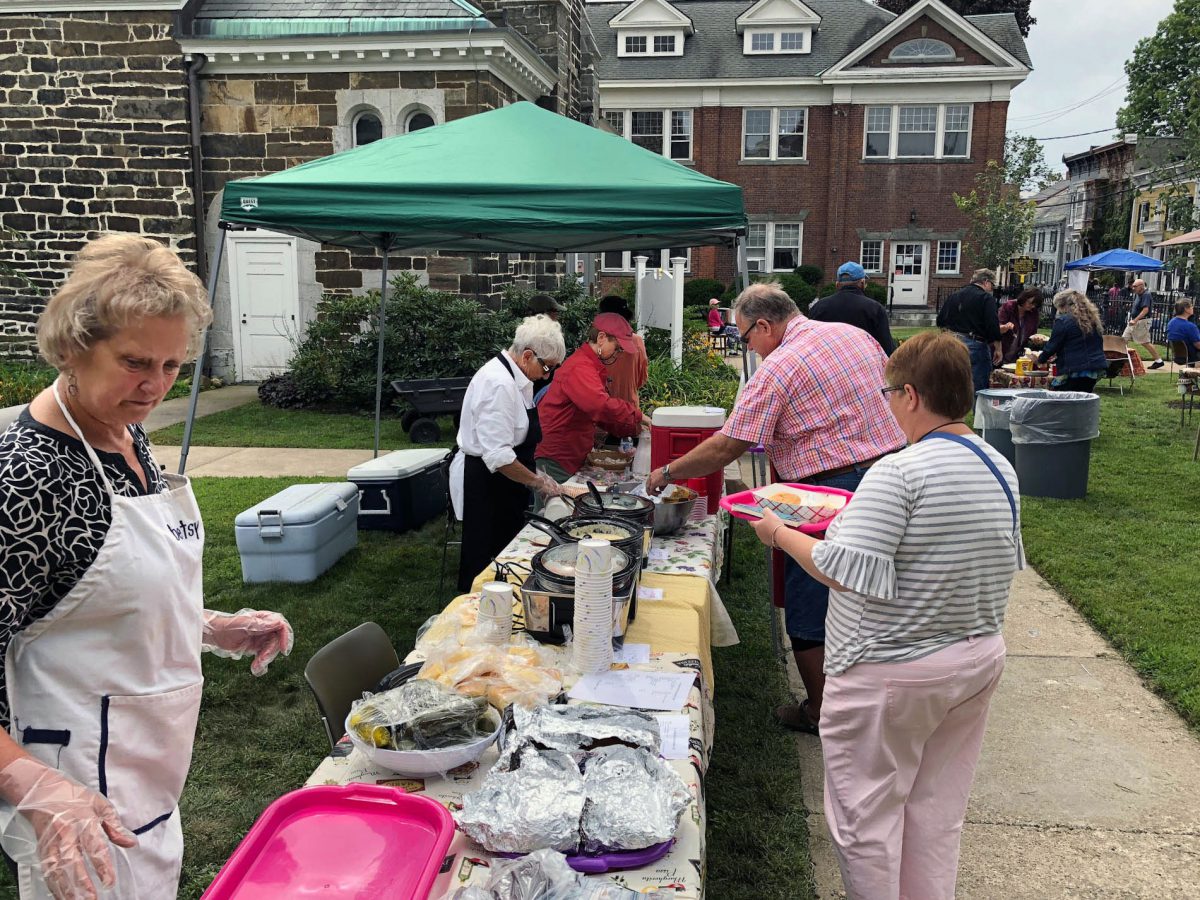
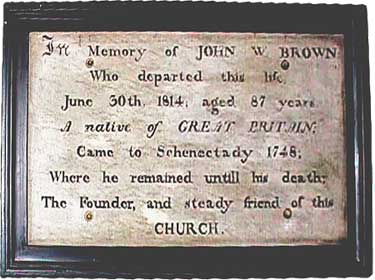
Genealogical Records at St. George’s
- Annual Register of Births (1767 – 1788)
- Names on Tombstones and Tablets Located in the Churchyard and Church
- Brides at St. George’s Church (1771-1850)
- Grooms at St. George’s Church (1771-1850)
